Our only regret in this CAD Exchanger version is that being released during the low season, it competes for your attention with such a stronghold as summer vacations. But when it comes to two new native formats and an all-formats reader and writer, none of the sunny routines can beat us.
Here are the highlights of CAD Exchanger GUI 3.10:
- 3D XML (CATIA V6) import
- Solid Edge import
- Mesh colors import in SOLIDWORKS
- Broader versions coverage for CATIA, JT, Parasolid, SOLIDWORKS
- Y-axis upward orientation in Collada, FBX, GLTF, OBJ
- Read and write PMI options for STEP and JT
3D XML (CATIA V6) import
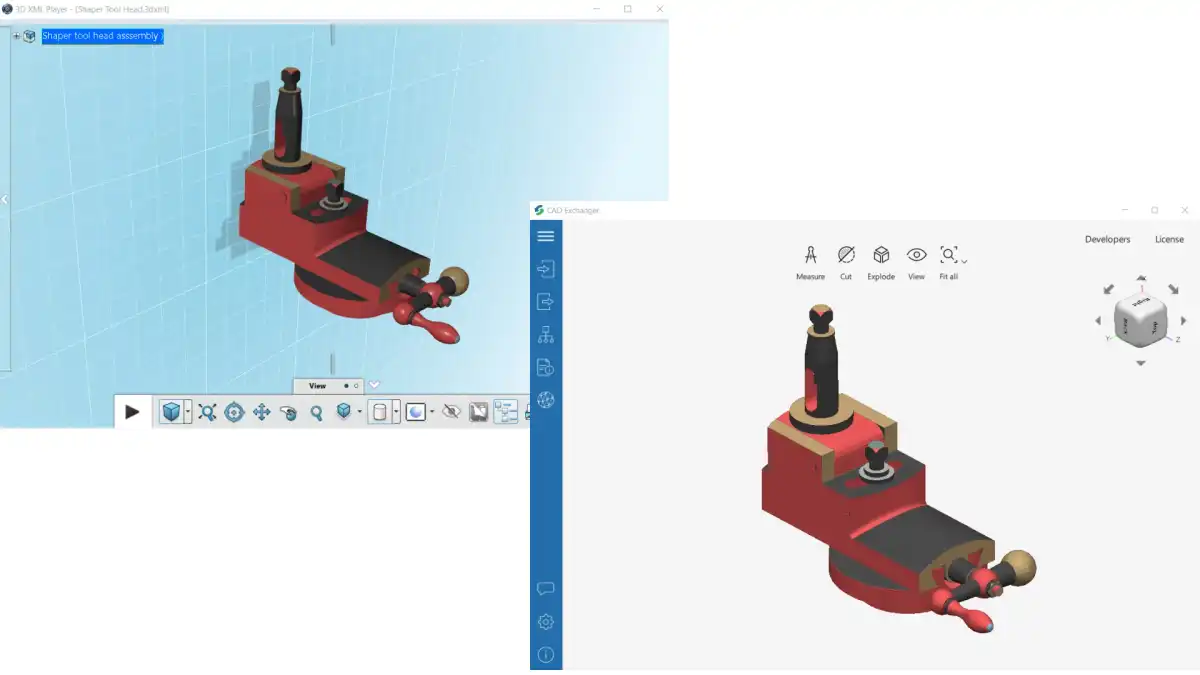
3D XML is a proprietary 3D file format developed and supported by Dassault Systemes. It is typically created as an export from Dassault Systemes' 3DEXPERIENCE application (also known as CATIA V6). The file is a zip archive file consisting of a BOM file and one or more 3D representations stored in either XML or binary format.
Compact file size allows users to transfer 3D XML quickly and embed it into websites, emails, and various MS Office documents. Therefore, the format is commonly used to integrate 3D data into technical and marketing documentation.
Since version 3.10, CAD Exchanger can read 3D XML files from schema version 4.0 to version 4.3. The scope includes part-assembly structure, polygonal geometry, names, and colors.
Solid Edge import
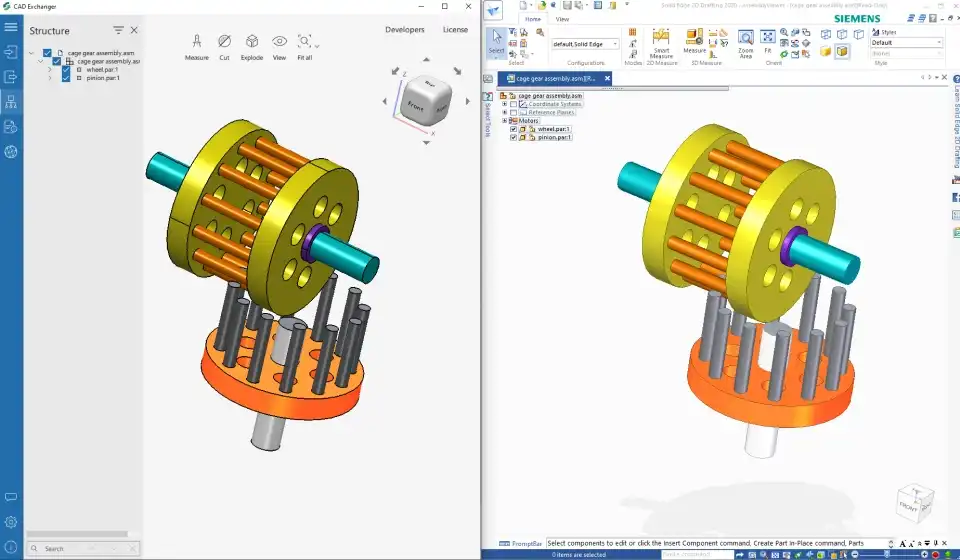
Solid Edge is a native format of Solid Edge, a 3D CAD solid modeling software for mechanical designers. Being developed by Intergraph on the basis of ACIS in 1996, Solid Edge changed its owner to Siemens and its geometric modeling kernel to Parasolid in 1998. Solid Edge targets the mid-range CAD market (with its closest rivals being SolidWorks and Inventor) and is used to store mechanical and electrical data, data for simulation and manufacturing processes, data management, and collaboration.
CAD Exchanger added support of Solid Edge files from version 17 to version 2021, including its part (*.par), assembly (*.asm), and sheet metal (*.psm) extensions. The converter enables import of B-Rep representations from part and sheet metal (PSM) files, colors, part-assembly structure, and external files. Polygonal representations and textures reading will be added in further CAD Exchanger versions.
Mesh colors import in SOLIDWORKS
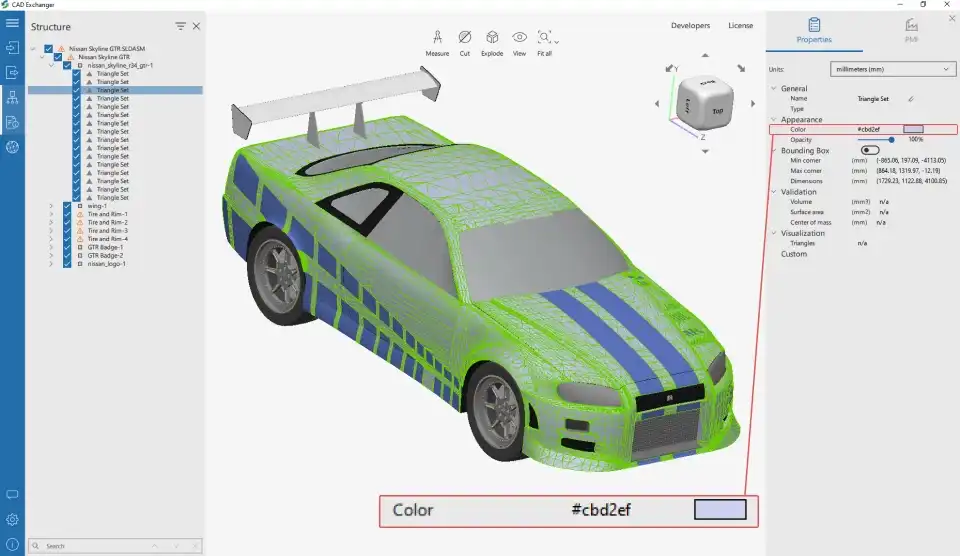
In July 2020 CAD Exchanger 3.8.1 was released with a new feature of SOLIDWORKS meshes import. Today we are taking another important step for this feature by enabling mesh colors support for the full range of recent software versions. Mesh color reading improves the usability of scenarios where standalone SOLIDWORKS assemblies (*.sldasm) with missing components are converted to mesh formats.
Apart from this, SOLIDWORKS converter reads B-Rep representations and their colors, meta-data, part-assembly structure, and external files.
Y-axis upward orientation in Collada, FBX, GLTF, OBJ
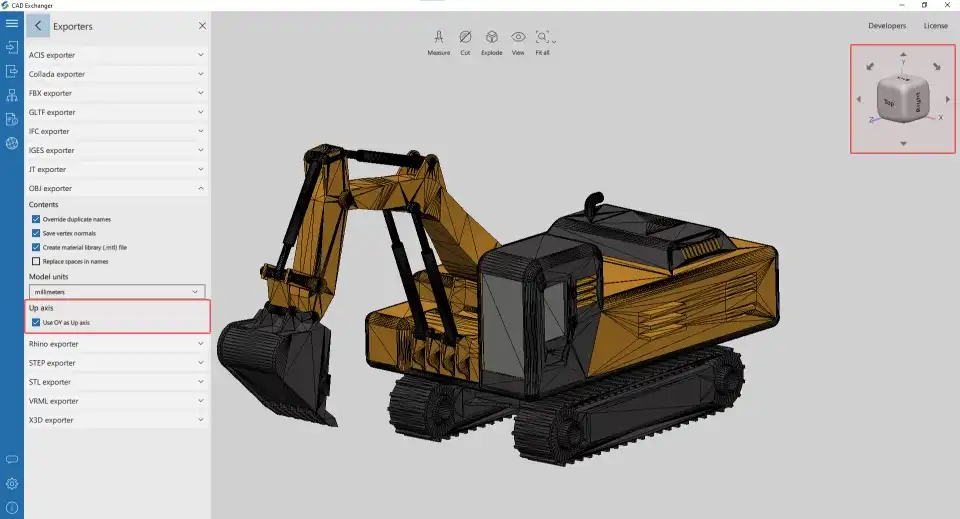
Mechanical CAD systems (such as SOLIDWORKS or CATIA) and Digital Content Creation ones (such as Autodesk Maya) often use different conventions on how to display a 3D model in a view. The former uses the Z axis up, whereas the latter - Y axis convention. When converting between these systems, the model may get visually rotated thereby confusing the user.
As not all 3D viewers allow object rotation, users had to find additional tools to get the model back to the initial orientation or work with visually rotated models.
To relieve users of these complications, CAD Exchanger GUI enables switching to the "Y-axis up" mode when exporting to Collada, FBX, GLTF, OBJ.
Miscellaneous
Broader versions coverage for CATIA, JT, Parasolid, and SOLIDWORKS
To ensure better formats compatibility CAD Exchanger scope was extended to support more formats versions: import of CATIA V5-6, V5R18 and V5R19, Parasolid 33.0 and 33.1 (also affects JT, NX, and SOLIDWORKS formats), JT 10.5, SOLIDWORKS 2021.
‘Read PMI’ and ‘Write PMI’ options for STEP and JT
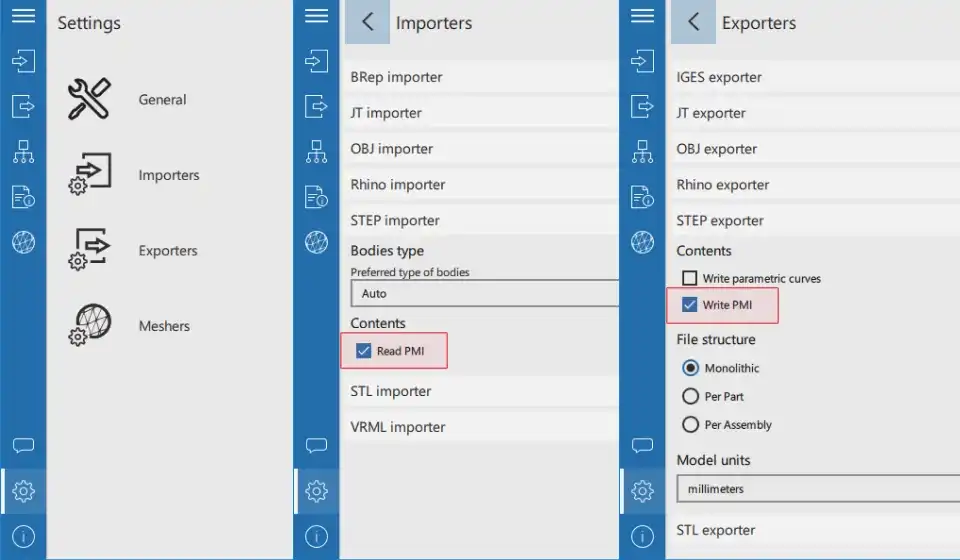
When working with STEP and JT files, CAD Exchanger GUI users are now able to control reading and writing of PMI data in the corresponding sections of the settings.
There are also other important changes in IFC, IGES, NX, PRC, Rhino, primarily focused on stability and correctness. Please check out a complete list of new features and bug fixes in the CHANGES.txt file.
Our mission is to provide you with the seamless conversion experience when working with whichever CAD package you prefer. If you are already a CAD Exchanger user, please feel free to share your feedback at support@cadexchanger.com.
By now existing customers should have received the notifications with the direct download links of the licensed products. If you didn’t receive the email please contact us at support@cadexchanger.com and we will follow up shortly.